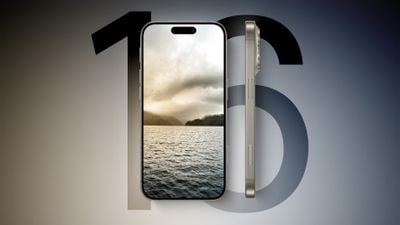MacRumors has shared multiple details on the iPhone 16's design, including the unveiling of a new button that is planned for the devices, the Capture Button. While we've known the name and location of the button, the internal information that we've obtained does not detail what it will be used for.

According to Bloomberg's Mark Gurman, the Capture Button will be able to record video. In this week's Power On newsletter, Gurman says that the iPhone 16 models will include a "new dedicated button for taking video." The Capture Button's function is, of course, hinted at in the name, but this is the first time we've heard confirmation of its purpose.
As we explained in a recent look at early iPhone 16 prototypes, the Capture Button will be located on the bottom right side of the iPhone 16. It will replace the mmWave antenna on U.S. iPhone models, with the mmWave antenna to be relocated to the left side of the device below the volume and Action buttons. Non-U.S. models do not have a mmWave antenna that needs to be relocated in order to accommodate the Capture Button.
The Capture Button will be a capacitive button with haptic feedback rather than a mechanical button, and it is expected to include a force sensor that can recognize pressure. The location of the button may make it easy to trigger, but if it is activated via pressure, it could be that holding it down will launch into the camera and allow video recording to start. The different pressure levels could also open up the camera for either a photo or a video (specifically a spatial video), but that's just speculation at this point.
The Capture Button is coming to all four iPhone 16 models, and with spatial video and the Vision Pro headset, it makes sense for Apple to make video recording quicker and more accessible. The Vision Pro headset can play 3D spatial videos that can be recorded with the iPhone.
Right now, the iPhone 15 Pro and iPhone 15 Pro Max can record spatial video using the Wide and Ultra Wide cameras in tandem, with this functionality added in iOS 17.2. The standard iPhone 16 models will feature a new vertical lens arrangement that will allow them to capture spatial video as well, so the feature won't be limited to the Pro models in the future. Spatial video can only be viewed on the Vision Pro headset, and it is meant to make users feel immersed in their memories.
For more on what's expected for the iPhone 16 lineup, we have dedicated iPhone 16 and iPhone 16 Pro roundups that aggregate all of the rumors we've heard to date.






















Top Rated Comments
For those following along at home, these things are your cue to skip the generation.
Oh boy….
But how about either:
* Showing an info screen to teach people that shooting video with phone in landscape means future playback that fills their TV screen instead of being a tall, thin strip of video in the middle and huge black bars to the left & right? OR
* Advance the camera capture so that one can hold the phone vertical but shoot landscape anyway... and then crop it "skinny" if that's the desired end goal by the user? If someone actually likes all of their video shot tall & skinny, default the playback that way when they are watching with phone in portrait (an "auto crop" for playback if you will).
There seems to be no amount of oral education about this topic that can move those listening to change the well-established habit of holding the phone vertical to shoot video. So, either make a little phone effort to re-educate everyone or make the phone capture landscape when camera is held portrait so that later- when the person who shot it that way is wanting it to "fill my TV screen"- one does not have to explain yet again that they must rotate their phone when capturing the video.
Does vertical skinny have a place in rendered videos? Sure, there are some applications where it works nicely. But I bet the vast majority of video capturing people would prefer landscape default if they could only know- and then recall when they want to capture new video- to rotate that phone... or have it go ahead and capture the left & right extra when they shoot in portrait so that they can see much more when they play back on any wider screen in the future.